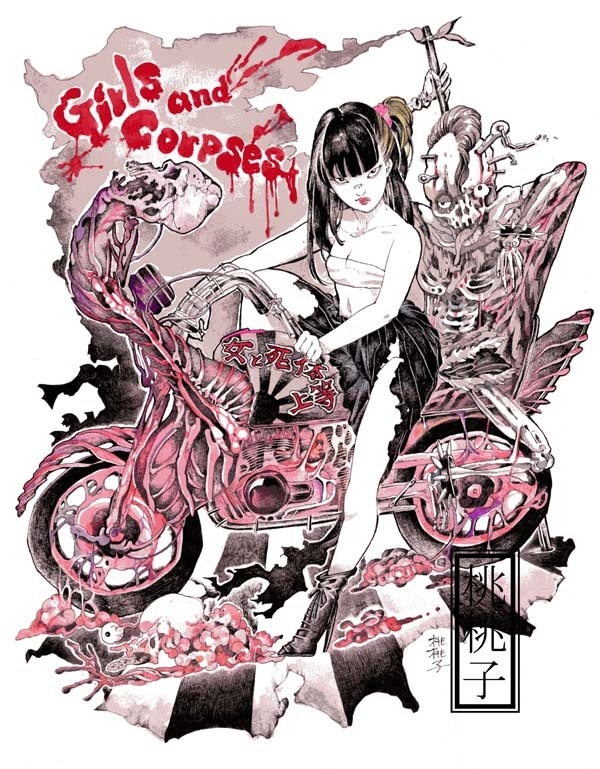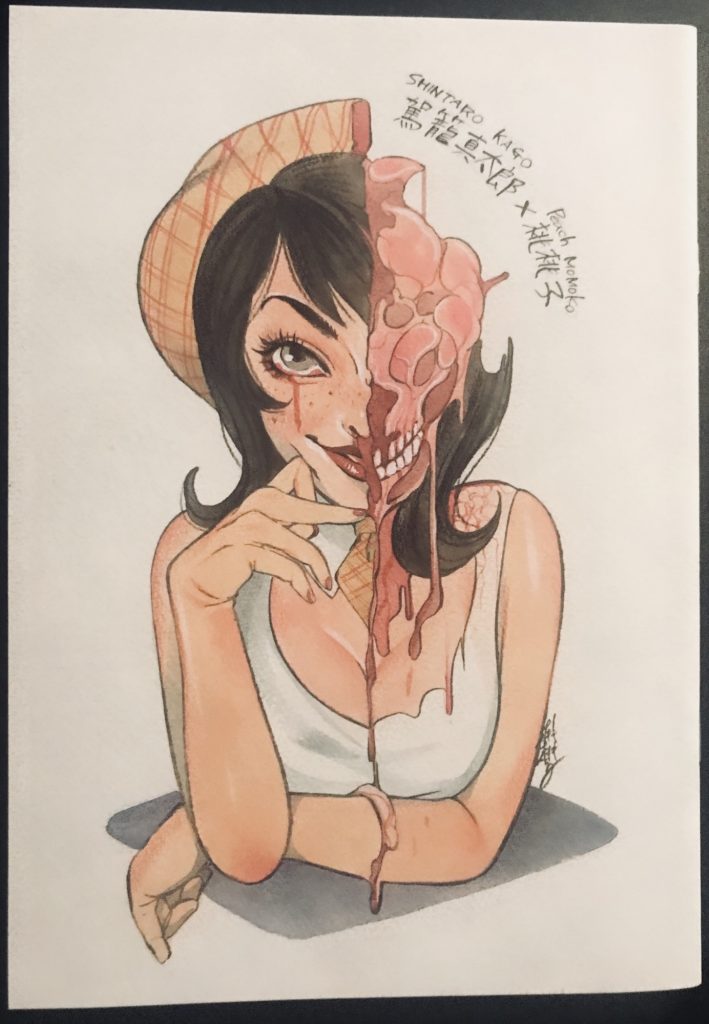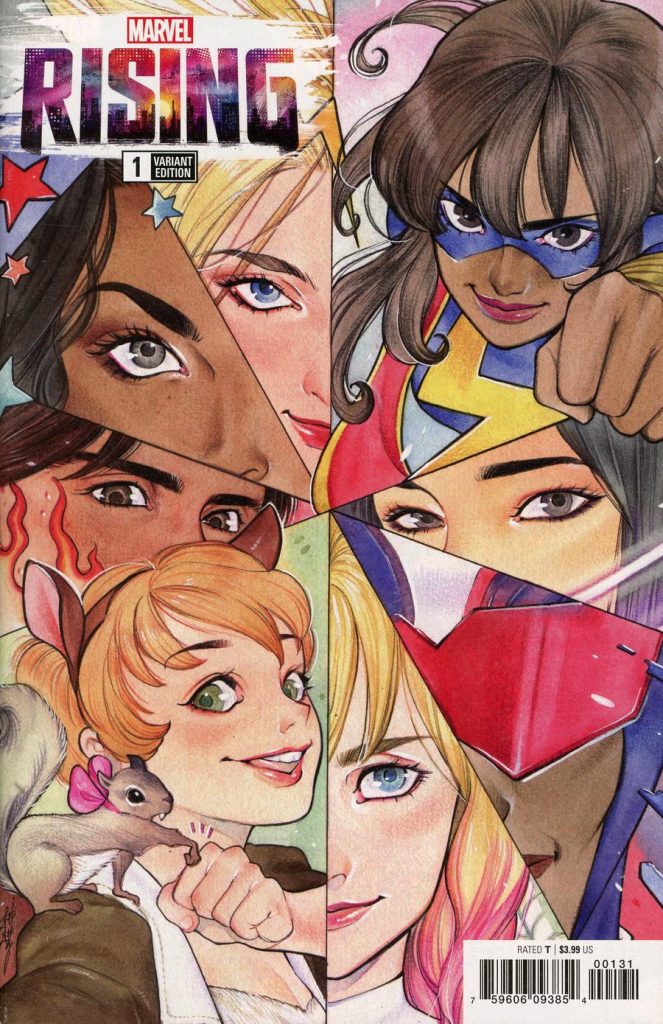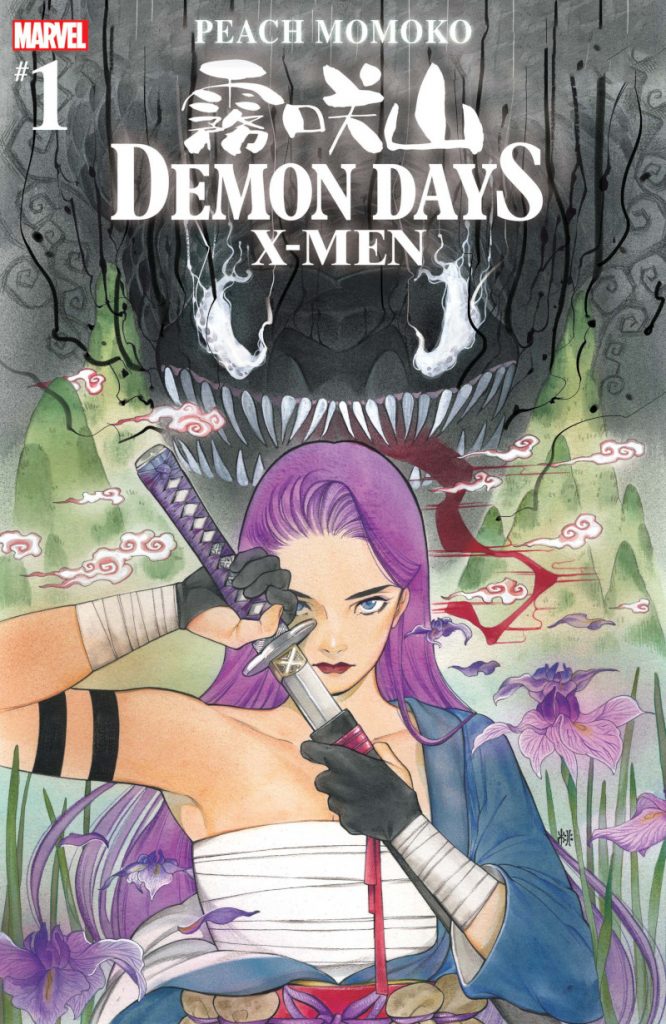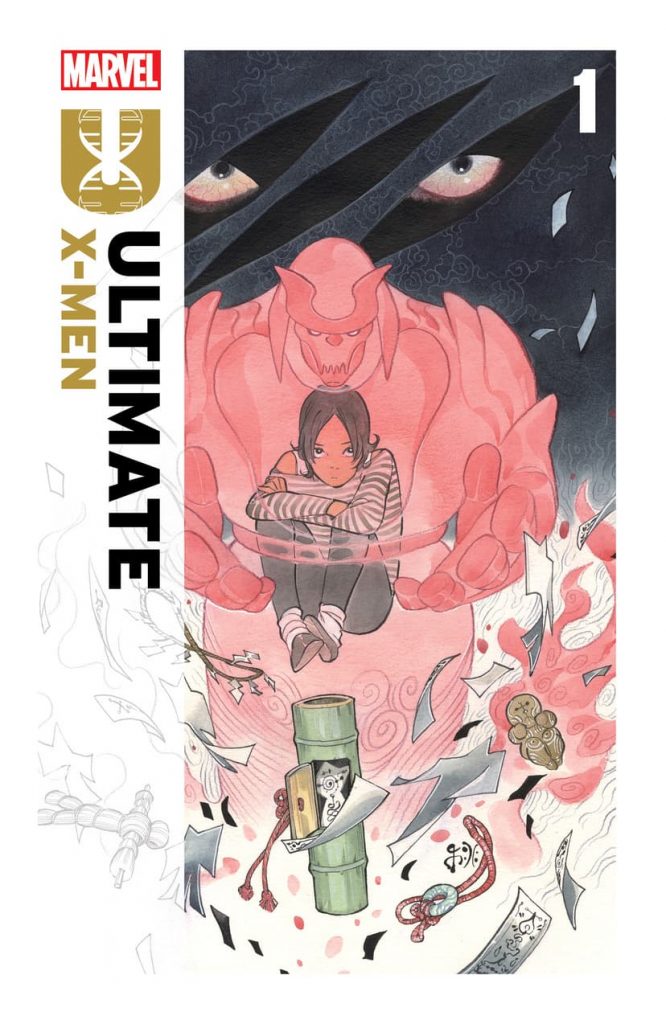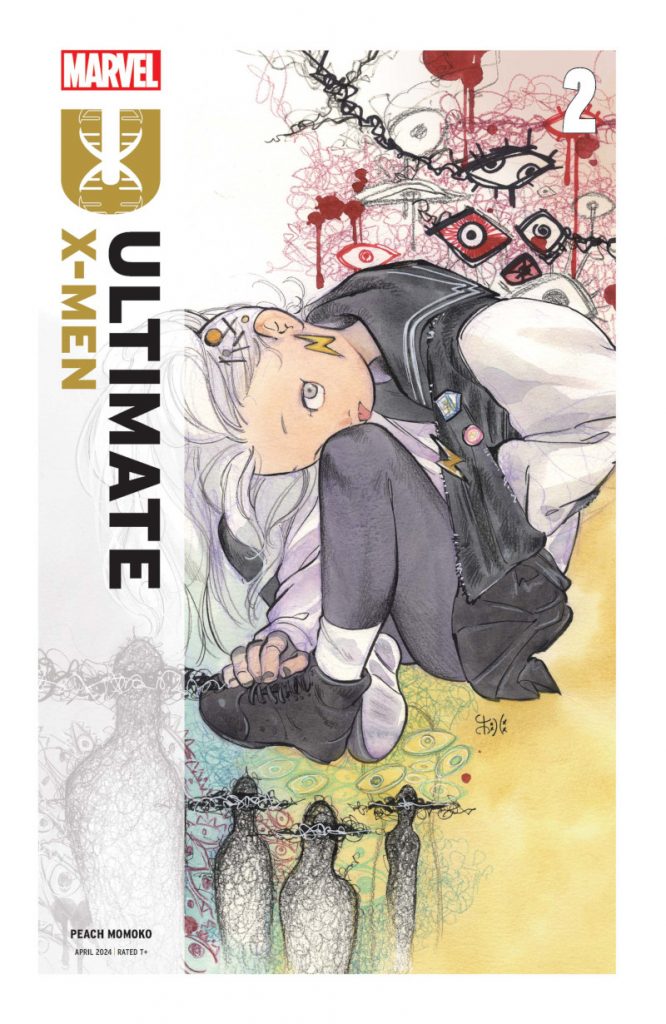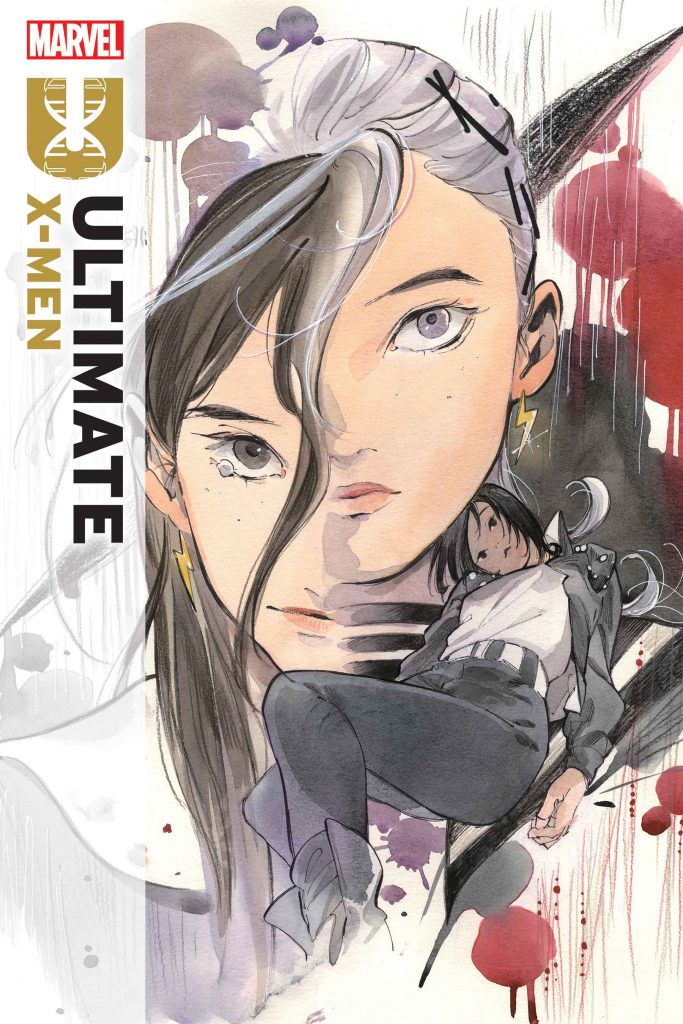“The Classic Ten-Year Overnight Success”: On Peach Momoko’s Long Journey to the Top
One day in 2019, writer/translator Zack Davisson wandered into a Seattle comic shop, Comics Dungeon. This was right around Emerald City Comic Con, the city’s largest comic book convention, which meant there was a deluge of writers, artists, and beyond in town. For a local comic book creator such as himself, Davisson was used to drop-bys like this. He’d often stop to chat with visiting pals, whether it was at the convention itself or events around town. That’s what he was doing that day. A couple of friends were signing at that shop, and he was eager to see them in action. There was only one problem, though.
There weren’t any fans at this signing.
That was the last time Davisson saw his friend — artist Peach Momoko — at an event like this. 1 And in the five years since, Momoko’s circumstances have changed ever so slightly. The person who was then a budding comic book creator sitting through a quiet signing has since become an Eisner Award winning cover artist, a top selling cartoonist, and someone whose signature is so desirable it can actually inspire fisticuffs. Today, Momoko is one of the true giants in the direct market side of the comic book industry, 2 and someone who generates about as much excitement as any creator in the business, at least according to those who know best.
“Peach is absolutely a top tier artist that moves books,” said Steve Anderson, the owner of the Maryland and Virginia-based comic shop chain, Third Eye Comics. 3 “She’s in the same category as artists like Alex Ross, Artgerm, Gabriele Dell’Otto, Bill Sienkiewicz, and Skottie Young where her work will move a book alone with a cover.”
“Peach Momoko is one of a handful of artists that moves the needle for our customers for variant or ratio covers,” noted Christina Merkler, the owner of mail order comics retailer Discount Comic Book Service, or DCBS. 4 “We have customers that will buy anything that Peach does because the art is the most important part of their purchase, especially when it comes to covers.”
Momoko has become a surefire sale in a market often bereft of them, someone whose work always astounds — even when there’s an incredible amount of it. Her efforts on Ultimate X-Men, one of the four titles in Marvel’s recent relaunch of its parallel universe, have helped it become a top seller, one that inspires passion and conversation in all directions. The belief for many is that this rise happened quickly, with the cartoonist experiencing a whirlwind ascent that’s rare for the industry.
That’s the idea, at least. It’s one many believe to be true. 5 But as that signing demonstrated, Momoko hasn’t always been the star she is today. It’s been a long journey to the top, something Davisson knows all too well.
“I was talking to some people at Emerald City Comic Con this year, and they were like, ‘I’d love to meet Peach Momoko.’ I was like, ‘Were you here a couple years back?’ ‘Yeah, of course.’ ‘You probably walked by her booth 20 times and never even noticed she was there,’” Davisson said. “She’s been here all this time. You just didn’t know who she was.”
“She’s the classic 10-year overnight success.”
In some ways, it’s been the adventure of her lifetime, something she’s been building to since her earliest days in Japan. Momoko — which is a pseudonym she created for herself back in school 6 — has always been surrounded by art. Her family was filled with painters, photographers, and journalists, particularly on her father’s side. Despite the bevy of artistic options presented to her, though, she always knew what she wanted for herself.
“My true love has always been drawing,” Momoko told me. 7 “I don’t know what connected me (to it) or why, but I just always drew. I didn’t really think I had any other choice but to draw.”
Growing up in Japan as part of an art-focused family was a boon to her development. She believes “that whatever I saw and lived when I was a child has a lot to do with the current me, as an artist and storyteller.” Whether that was being exposed to Studio Ghibli early on — she described the animation studio as something that “resides in my brain, heart, and blood, rent-free” — or constantly browsing whatever books, encyclopedias, or manga she could get her hands on, Momoko gravitated towards art in an almost compulsive way.
“Learning about different art and styles and genre is very important because I take in art to clarify my approach and how I want to express myself,” Momoko explained.
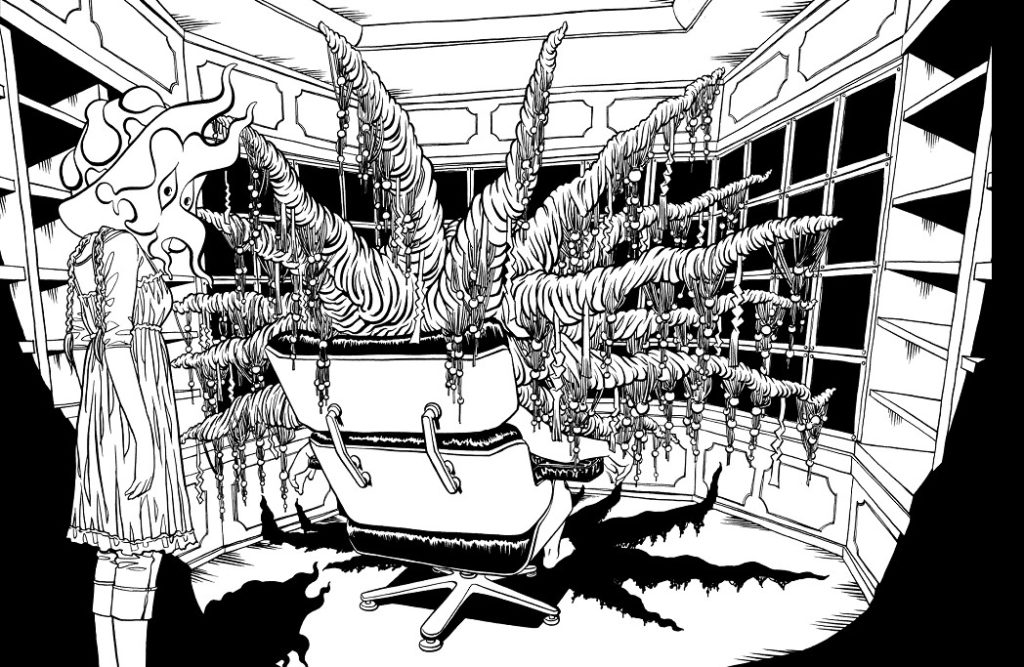
While certain people — like Atsushi Kaneko, a Japanese manga artist whose “images of female fighters” inspired and energized Momoko 8 — helped motivate her, make no mistake about it: Momoko was always destined to be an artist. It wasn’t a choice.
It was just reality for her.
“Honestly, I didn’t really care to investigate what else I wanted to do professionally but in the art world,” Momoko told me.
The only question was how that art would manifest itself. Going to art school helped crystallize one element of that. That was when she realized she specifically wanted to draw people. The cartoonist “always loved people watching” as well as fashion and studying character reference sheets from movies and video games, and that affinity for people became an emphasis for her art. It’s just how her mind works. But when she began as an artist, she wasn’t aimed at comics. At least not yet.
“I don’t think she was trying to make it in comics,” Davisson said. “I think she was trying to make it as an artist.
“And I would say that those are two entirely different things.”
In the period before she made her way into comics — this was the late aughts — Momoko did a little bit of everything. Gallery shows. Murals. T-shirts. She even edited and did illustrations for a pornographic magazine. She was doing more work in America during this stretch, and that’s when she first did illustrations for Girls and Corpses magazine. While that might not sound like a major moment for those unaware of that publication, it was a crucial one for Momoko.
“Girls and Corpses introduced me to the world of comics and comic conventions,” Momoko said. “So, I do believe it was a very important first step in my comic career.”
These efforts in its Winter 2013 and Spring 2014 issues were her first real comic work, and they led to the owner of Girls and Corpses, Robert Rhine, inviting her to Comikaze back in 2015. It was at this comic convention in California when her path to comics truly began.
“Going to a comic convention really taught me comic and commission culture. During my first few years of attending conventions, I was still busy working on commissions and had fun seeing so many different requests and the smiles they brought to people,” Momoko said. “I decided to do more and more comic conventions, and I knew I didn’t want to focus my career just on attending shows and doing commissions. Although I did not really know how to approach publishers, I felt (that) eventually timing and opportunity (would) meet.”
It was at one of those conventions where she first met Davisson, her oft-collaborator on projects like Demon Days and Ultimate X-Men. Davisson was at Rose City Comic Con in 2015 when he walked by her table and was immediately floored by what he saw.
“Her art was just striking. She clearly had a specific vision. When you walk through Artist Alley, you see a lot of people doing imitations of other popular styles and things like that,” Davisson noted.
“Peach clearly gave zero fucks.”
He stopped by her table and was similarly charmed by Momoko and her husband and manager, Yo Mutsu. They traded business cards, and even after the couple moved from Portland back to Japan, the three kept in touch. But it wasn’t just business cards they exchanged. Davisson picked up a self-published flip comic Momoko had done with Japanese comic artist, Shintaro Kago. Within its pages, the cartoonist revealed her natural lean to him.
“It’s typical of Peach’s artwork, where basically a young cute girl turns into a pile of body parts at the end,” Davisson said. “That’s just Peach, though.”
While many believe they know exactly what Momoko’s art is, they’ve probably only gotten a taste of it. She’s shown glimpses of this in her work, but horror was — and is — a major focus for her. Momoko “always enjoyed watching and reading scary Japanese urban legends, horror movies, and ghost stories,” and has for as long as she can remember. And that’s something that’s looms in the back of her creative mind, even in her Marvel work.
“Those images really gave me inspiration, even when I was little. Even though it was scary, I have so many good memories in this genre that I really take (them) and input them into my art,” Momoko said. “Even if my comic is by Marvel, I always try to remember the little Peach that got excited and inspired by these images, thinking there might be another person out there that could feel the same joy that it gave me.” 9
Davisson believes her affinity for “gruesome” horror was part of the reason it took Momoko a bit to make her way in comics, saying she even “produced comic strips that were rejected by Heavy Metal Magazine because they were too grotesque.” He noted that “her personal tastes” “were not marketable to a broad audience” initially, something that may have made her an uneasy fit for some publishers early on. 10
“In 2015 or 2016, her path was not leading her to Marvel,” Davisson said. “I don’t think she had any idea that her life would become what it became.”
At Emerald City Comic Con 2019, Momoko’s big break was on the horizon. Davisson and Momoko were talking with Mike Mignola about collaborating on a new project: Hellboy in Japan. It had gotten far enough along that Mignola was reviewing preliminary art, with Davisson saying the legendary cartoonist was “excited about the prospect.”
“We had a meeting set up for Emerald City Comic Con 2020, which was supposed to be me, Mike, and Peach,” Davisson said. “And then that vanished.”
That convention was the first lost to the COVID-19 pandemic. With its cancellation and the uncertainty that followed in the comic industry, Hellboy in Japan evaporated. For some, that might have been it. It’s fate telling you comics are not for you. That wasn’t the case for Momoko, though. While the perception of her career is that of an out-of-nowhere success, she just kept doing what she had been doing for her entire life: drawing.
“I just believe you have to keep doing what you love,” Momoko said. “It is difficult to even get noticed but I just knew what I needed to do. And it was to draw and paint.”
That singular focus is something others noted about her. She’s driven in a rare way, and it’s out of a pure passion to make art, whether it’s for a job or herself.
“I’ve never seen Peach not draw for over 48 hours,” Mutsu told me. “She always is drawing something, either for work or for pleasure. Even after a full day of painting for covers or interiors, she still paints something non-work related on her cool off time.” 11
“She is one of the most focused human beings that I’ve ever met,” Davisson said. “You strap her to a drawing table, and you can blow up a bomb next to her.
“She would never notice.”
That diligence paid off in a major way. But to properly explore how it did, we have to flash back a few years to 2017. That’s when artist Adi Granov went to Tokyo Comic Con. Granov’s wife Tamsin was a fan of Momoko’s already, so the pair made sure to stop by her table at the convention. This was a big deal, as meeting Granov was an important step towards Momoko getting her “foot in the door at Marvel,” according to the cartoonist.
“After meeting her and seeing her work I thought our friend C.B. (Cebulski, the now Editor-in-Chief of Marvel) would love it too,” Granov said.
Granov brought Cebulski to Momoko’s table at New York Comic Con 2018, and as she put it, “the rest is history.” But in Granov’s mind, Momoko would have still made it without them.
“Peach’s art is unstoppable and her work ethic unrivaled, so it would have exploded onto the mainstream scene one way or another,” Granov said. “I am happy to have opened this particular door, but more so to have been fortunate to have front row seats to the magic that Peach creates.”
Momoko’s first cover for Marvel was a variant for Marvel Rising #1 in March 2019. That first year, one where she crafted nine covers for Marvel and 13 overall, 12 was a learning one. At that point, she had little awareness of the publisher beyond drawing its characters for fans who stopped by her table at conventions.
“My knowledge of American comics in general was slim to nothing,” Momoko explained. “I think all the commissions at conventions really helped me understand the unique appeal (of each) character, and that opened my eyes (to how) to create a cover in a visual aesthetic.”
It was a comparatively slow start for Momoko, but she had a believer in Cebulski. That made a major difference in Davisson’s mind, both because the inroads he offered her and his guidance on her art.
“I’m still amazed that C.B. looked at Peach and saw someone drawing people being ripped apart and eaten, and thought, ‘Hey, I know what the missing part is here.’ But C.B. has an extraordinarily good eye for talent,” Davisson said. “I think most of her style nowadays is what I would call the ‘C.B. Style,’ because it’s kind of how she was mentored into being commercially successful. That was a missing component of her back in her pre-fame days.
“He really helped her in a way that’s just unmistakable.”
In Momoko’s mind, the biggest thing the Marvel exec did was he allowed her “to do what I want and what I believe,” giving her the “confidence to create covers and interiors in my own voice.” She had figured out exactly what she wanted to do, and now, she had the opportunity. While Hellboy in Japan didn’t come together, 2020 was a boom time for her. Momoko became one of Marvel’s Stormbreakers — its program identifying “the next generation of elite artists” — and had at least 220 covers released 13 across a bevy of publishers.
Suddenly, the artist who barely had double digit covers to her name was everywhere. More than that, her covers were molten lava. Most proved to be enormously popular. It was an incredible surge of opportunity and interest; the type of which Davisson had only seen once before.
“I think that the reaction to Peach is similar to the reaction to Alex Ross, something where (the art) is so entirely singular and has never been seen before.”
This is around when comics critic Oliver Sava saw a divide form. As he put it, “There was no Peach and then there was a ton of Peach.” And because “nearly all of it” was covers and variants, she was able to get “a ton of exposure and word of mouth right away.” That proved valuable, if only because of when it happened. That was another key to her rise, even if she had no control over that aspect at all.
“I think it’s important that her ascent happened during the start of the pandemic when everyone is at home and extremely online, which helped her grow a large fanbase quickly,” Sava said.
He’s not wrong. Even Momoko admitted that “everything did pick up during the pandemic.” Her dramatic uptick in work hit right as a wave of collectors and speculators entered the market, and her position as the latest, greatest cover artist made her a focal point of that push. More than anything, though, Momoko’s covers popped for one simple reason: She’s incredible at what she does. More than that, she does it in a way that’s entirely her own.
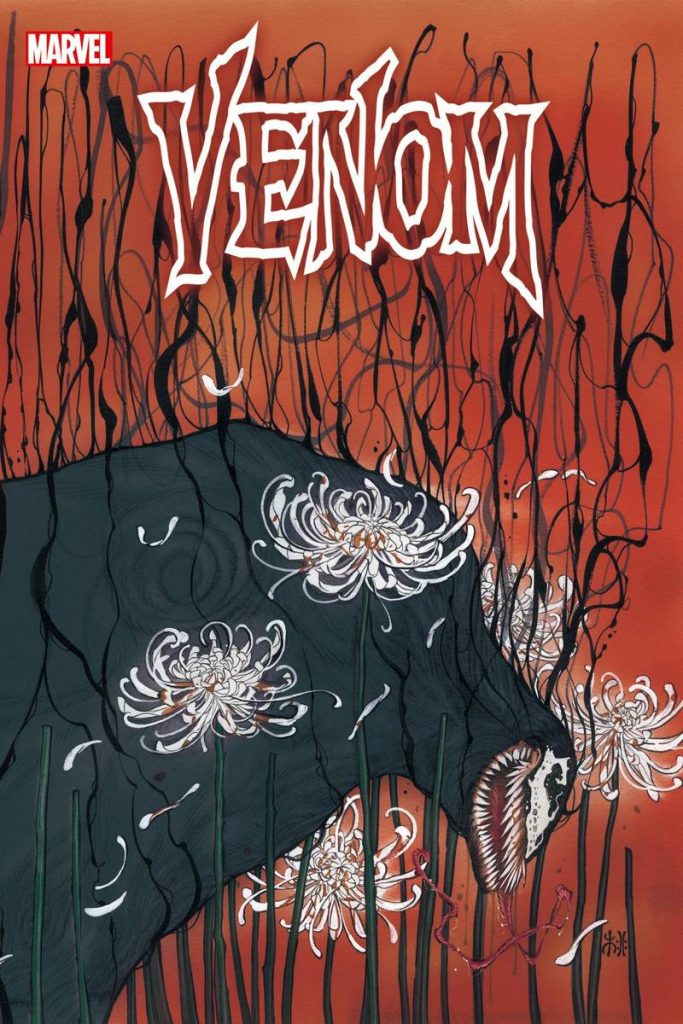
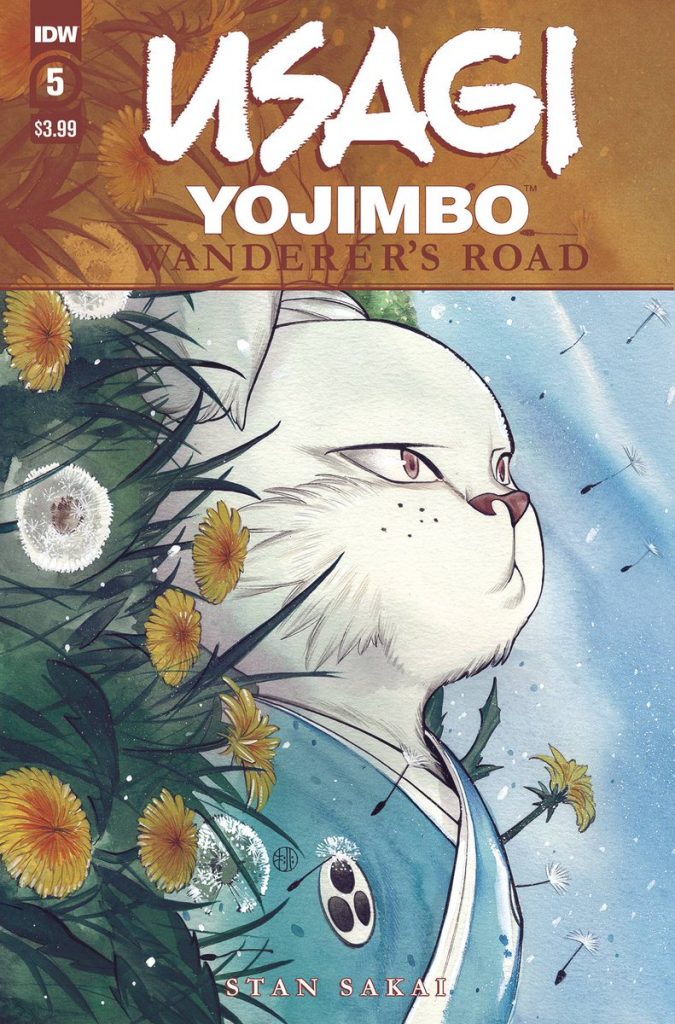
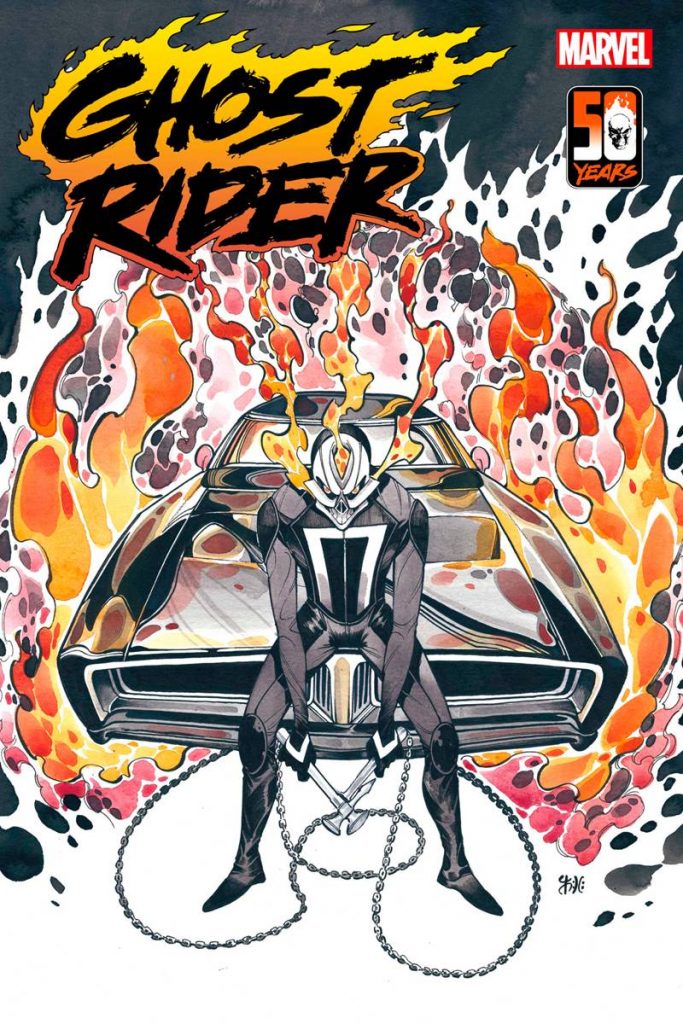
“There’s an inevitable sameness that creeps into the sheer volume of covers Marvel produces, and at an absolute minimum, Peach’s work is decidedly different,” Comic Book Herald’s Dave Buesing said. “The fluidity of watercolors and manga-influenced character designs makes each cover feel like you’re getting a personalized commission instead of an overly processed work for mass consumption.”
“She’s the kind of artist you want to see draw your favorites in her distinct style because she makes surprising choices,” Sava added.
Momoko’s goals as a cover artist are simple. She aims for a core theme and builds each piece around that. From there, it’s all about having “confidence in what I (want) to express in my work,” according to the artist. That’s the heart of each piece she takes on, but she’s always building on what that means and leads to. That isn’t by accident.
“I always think about evolving,” Momoko said. “Not just evolving skills, but also evolving how to think (about) and approach the project. For me, this evolution is crucial to keeping things as unique as possible.”
Part of that growth comes from a constant push and pull between being satisfied with her work and not. She explained that when she paints a cover, she has “to like the outcome.” If she doesn’t, she’s not afraid to change everything, even if that wasn’t part of the plan.
“If I have any doubts today, I will scratch a cover and paint a new one,” Momoko told me. “I probably make editors scared because I will sometimes turn in a new cover suddenly that (they) didn’t see a rough idea (on).”
That constant desire to push herself has helped Peach become a cover artist with an unusually broad range. That’s the reason writer James Tynion IV gravitated to Momoko for covers on his creator-owned projects. There are few people in comics who better understand the power of a great cover than Tynion does, and he loves how expansive her capabilities are.
“There’s an incredible range to Peach’s work that has always drawn me to it,” Tynion said. “There’s the softness that leans so well into an all-ages fantasy epic like Wynd, but a strange and frightening sharp edge to her work that leans directly into my most frightening horror comics.”
“I’m sure there’s a degree to which the audience might see their attraction to the work being more tied to it being this unique manga-adjacent style, but I do think it has more to do with that exciting range,” he added. “The juxtaposition of softness and sharpness. It’s a vibe I want my books to carry with them, and I think there’s just an incredibly comfortable fit between fans of Peach’s work and fans of my own.”
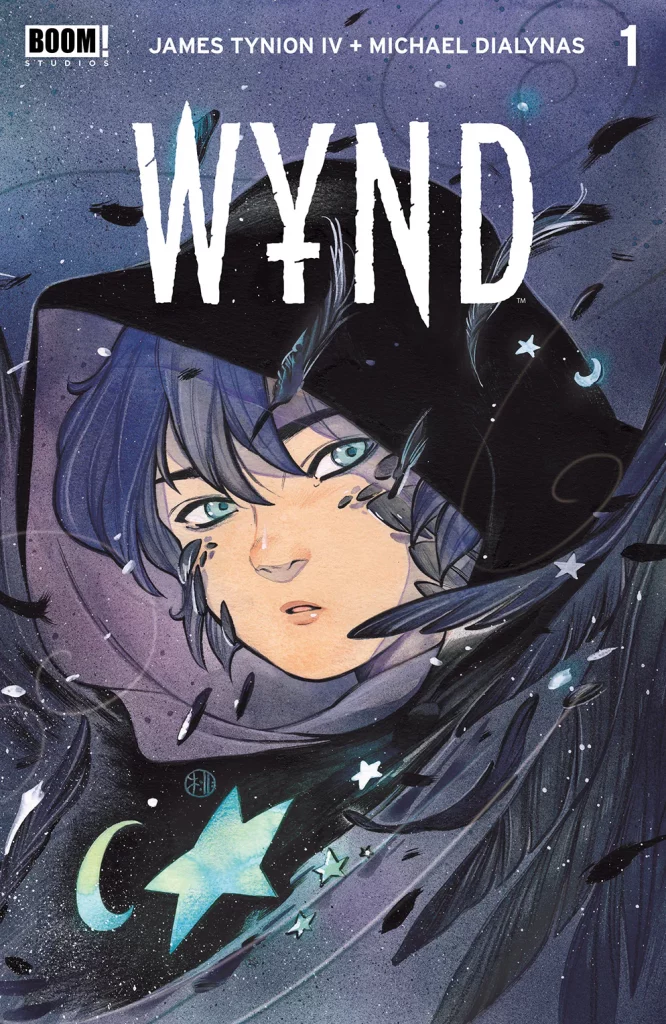
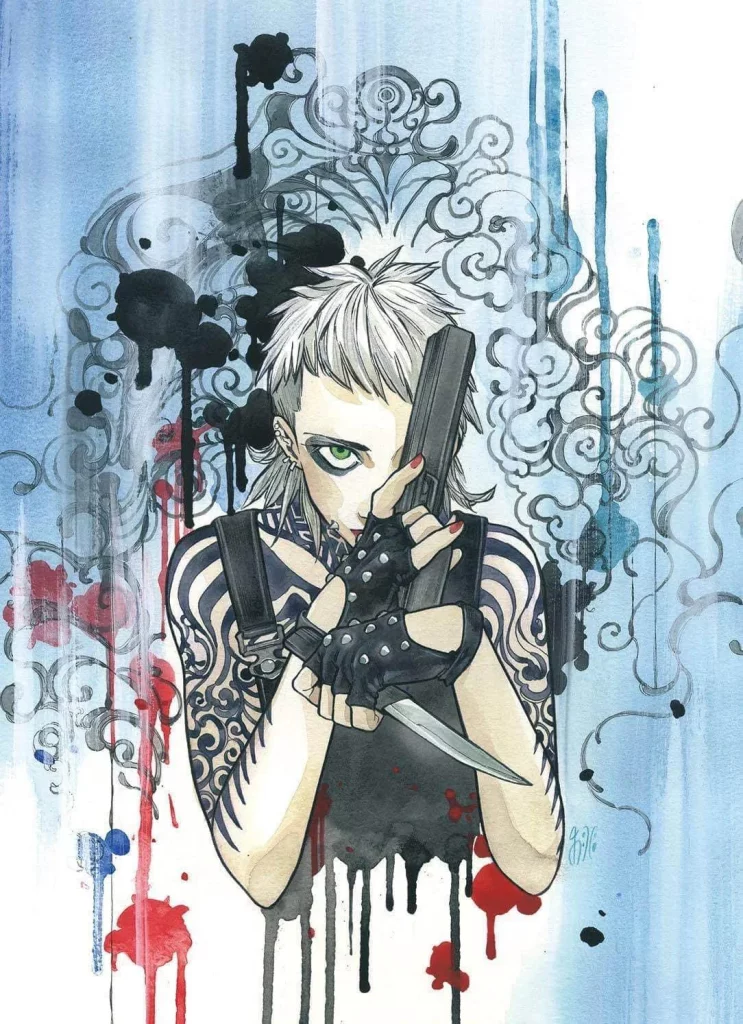
It’s become apparent that the cartoonist’s fans have a similarly broad range. She’s risen quickly up the ranks of cover artists at least in part because she’s captured the attention of both art aficionados and collector/speculator types. That’s been hugely beneficial for her. But sometimes the convergence of those audiences can create challenging situations.
Take New York Comic Con 2022 as an example. That convention was her first American appearance since the pandemic. Because of her focus on the work and insulation from the industry thanks to living in Japan, she was unaware of how popular she had become. Davisson even told her in advance that she needed to prepare for a much different environment than the trickle of fans that showed up at her last signing in Seattle back in 2019.
“She just didn’t believe me,” he said.
Momoko was doing reasonably priced commissions and signing up to ten comics for those who lined up to meet her — that’s because, as Davisson put it, she’s “extraordinarily generous and kind,” and more than that, she “genuinely wants to give back and appreciate people” who like her work 14 — and that resulted in long, enthusiastic lines. Things escalated on the final day of the convention, though, as some looking to profit from her popularity became rowdy. People were “literally fighting in line over her,” per Davisson, which ultimately resulted in Momoko stepping away for the day. 15
“NYCC 2022 was crazy,” Mutsu said.
While it was a challenging experience, it was also a learning one. Mutsu told me they now schedule time slots for people who want a signature or commission, and they also limit how many comics she signs. They weren’t sure how fans would respond to those changes. The fear was that it could create a different type of frustration. But as Mutsu told me, “The results have been much healthier for both parties I think.”
While the day itself was chaos, Mutsu said it was also “a special experience.” It allowed them to meet “a lot of passionate people,” and resulted in them hearing from concerned fans and artists who were trying to help. That meant a lot. Even though it was a difficult situation, it was also one that made them feel like they were part of a larger community.
Even as she ascended up the cover artist ranks, it became apparent that Momoko was destined for more, both to Marvel and the cartoonist herself. While she hadn’t previously aspired to write her own comics, taking on the sheer number of covers she did 16 made her realize she “wanted to do more than just covers for other people’s work.”
“Soon my brain started to want to ‘create’ my own thing. My own designs. My own characters,” Momoko said. “Eventually I wanted to show Marvel I am more than just a cover artist.”
That’s when she pitched Marvel a story starring Mariko Yashida, a character that appealed to her. That was what eventually became Demon Days and led to her own parallel world that was quickly dubbed “the Momoko-verse.” As was the case with her covers, these stories proved to be quite popular, even though the transition from cover artist to interior storyteller is an atypical one.
“It’s rare that you see an artist rise to fame on Marvel variant covers and have so much success they turn that into their own unique imprint of written/illustrated full comics,” Buesing said. “Momoko’s cover art is so unlike anything else at Marvel that it shows a strong understanding by the publisher to recognize they should encourage more of that creative vision in other areas.”
That last point is important because Momoko’s work telling her own Marvel stories is really just that: her own thing altogether.
“She has a specific vision that she wants to do,” Davisson said. “I would say she has no interest at all in Marvel Comics. Not the slightest.
“She’s doing Peach Momoko comics.”
“She really showed off that ability in her Marvel work where she embraced their characters while remaining authentic to herself. It’s Marvel, but undeniably Peach,” Granov added.
Making it work came with a learning curve for Momoko. She told me she “learned and figured things out simultaneously.” But the good news is she didn’t do it alone. She had support from her editors, and she brought Davisson on as her collaborator. That meant a lot to him.
“It was lovely of Peach to take me along for the ride,” Davisson said. “She didn’t abandon her friends when stardom hit.”
Their collaboration is a fruitful one, and he is an essential component. Even though they’re operating outside of Marvel continuity, both in the Momoko-verse books and Ultimate X-Men, Davisson helps ensure everything is in the right place for the publisher.
“Our editor, Lindsey (Cohick), always said, ‘Peach makes comics. Zack, you make them Marvel comics,’” Davisson told me. 17
Momoko’s work at Marvel went to another level with the launch of Ultimate X-Men back in March, and her ascension to the writer/artist of that book happened largely because of just how different her approach is, according to line editor Wil Moss.
“With Spider-Man and Black Panther, it’s easy enough to find a different take for the Ultimate line because in the main Marvel Universe there’s only one Peter Parker, there’s only one T’Challa. But in the main Marvel U, there are a lot of different X-Men — both characters and types of series,” Moss said. “Peach was ideal for Ultimate X-Men because of how singular her vision is. We knew she could build an X-Men series that would be unique to the Ultimate line.”
Momoko was pitched on the book when she was teaching at a Disneyland Paris event The Marvel Art Atelier. While she was on a break, Cebulski called with the idea. She immediately thought it fit her well — both from a subject standpoint and a timing one.
“I have always liked the theme of X-Men and mutants, so the appeal was there from start,” Momoko said. “But I also felt a new fresh challenge, (something) different from Demon Days and Demon Wars, was something I wanted to take on.”
It was received well by Momoko, and by observers around the industry.
“It was a smart, audacious choice that showed this version of the Ultimate line was going to take some big creative risks,” Sava said.
“Peach on X-Men is a jolt of electricity through a system that too often recycles the same approaches,” Buesing added.
Everyone agreed: it was a great idea. Now she just had to figure out what to do.
It didn’t take much. Momoko had a clear vision for the X-Men from the start. For her as a storyteller, “the difficulty of living in the human world and accepting your true self-identity” were appealing hooks. From there, she just “put (her) filter through it” and “added Japanese culture in the series,” all while “keeping it respectful to the 616 X-Men.”
Given that it was agreed early on to set the series in Japan — which makes sense given the regional diversity of the line and how the villainous The Maker’s Council is approaching things in it — she quickly landed on Hisako Ichiki, the mutant known as Armor, as her lead. A big part of that character’s appeal was how her powers reinforced the themes Momoko was aiming for.
“I felt her armor really represented a girl creating her own shell to protect herself, to isolate herself, to not deal with society,” Momoko said. “And this theme of creating a shell to protect yourself from society really expanded my story.”
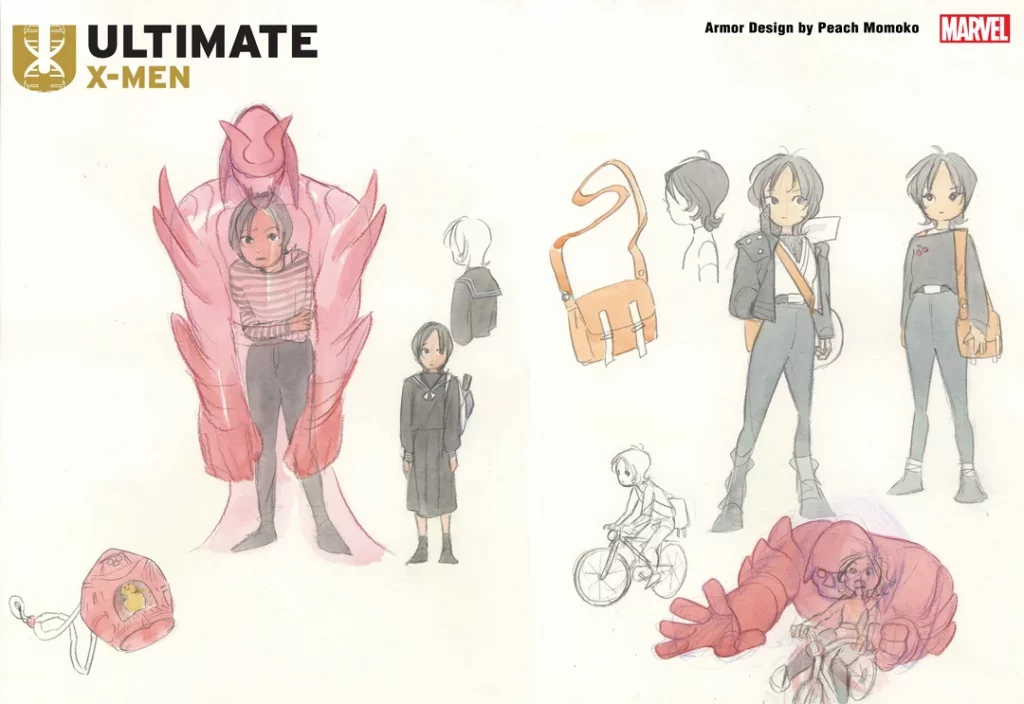
From there, it was just Momoko doing her thing with Davisson. He emphasized to me that while they do have a real process together, “my whole goal is to help her get her vision across to as many people as possible.” That’s important, because as he explained, she gets a lot of freedom to do her own thing in the series.
“The amount of blank check that she’s been given to do this series…I don’t think anyone else in comics, or at least not in Marvel Comics, has been given (that),” Davisson said.
There are some considerations, of course. This title being part of a new line means that for the first time, she must factor universal needs in to some degree. She described that as “a big challenge” and something she’s always thinking about, even if she doesn’t want to force it. That’s because while she wants to be considerate of larger continuity, she’s telling her own story, one that has its own objectives.
“I don’t want to forget my focus or what I want to say in this series,” Momoko said. “My focus is and has always been the struggle of the adolescent teenager’s mutant power waking up and how they handle themselves in society.”
That single-mindedness has led to the cartoonist quickly learning how X-Men fans operate. Davisson said Momoko was taken “entirely by surprise” by the response to the book. While the bulk of it has been positive, there are some who have been bewildered by its atypical rhythms and emphasis, especially for the X-Men. As Davisson put it, “I don’t think we’re doing a X-Men comic per se. We’re doing a Peach Momoko comic that is using some of the characters from X-Men.”
“(She) thought nobody cared about the actual characters in the X-Men. What was important was the theme,” Davisson said. “And I was like, ‘That’s just not the way it works, Peach.’”
It seems to have worked out anyways. The book is a hit. Davisson said it was the highest ordered comic the month it launched, and Merkler has found that customers are responding to it as well, with its first issue selling “as many copies for (DCBS) as Ultimate Spider-Man #1.”
“I believe Peach’s interiors had a lot to do with that,” the retailer emphasized.
Really, it’s just the Peach of it all that makes it work according to…well, everyone I talked to.
“It’s the force of Peach’s art,” Davisson said. “I think that if you took someone and did the exact same thing, but you didn’t have that vision of Peach and her art, I don’t think it would work.”
“It’s completely different from every other superhero book right now, and that’s a very good thing,” Sava shared. “It delivers on the Ultimate promise in a way no other book in the line has done before — including the original run — giving us a true reimagining of concepts and characters from a creator who has never had to adhere to western superhero storytelling conventions.”
“Letting an intensely skilled creator take the (X-Men) franchise in a direction divorced from those familiar refrains feels like a great way to infuse it with new life and ideas,” Buesing added. “It feels like an honest-to-God miracle that one of the four new Ultimate line launches could be this singular and follow a vision this idiosyncratic.”
That’s what Marvel wants. As Moss put it to me, the publisher “went to her with this project because we wanted Peach Momoko stories, and that’s exactly what she’s delivering.”
That’s proven to be a win for all involved. Of course, some have wondered how long this run can last. Davisson has asked himself that same question. Ultimate X-Men is the first time Momoko has taken on a monthly schedule for a comic she’s writing and drawing. He described that as a “huge challenge for her.”
The cartoonist told me she knows what she needs to do: she just has “to work harder and more focused.” That’s part of her ongoing evolution, and part of her process of discovering exactly what she is capable of.
“I am still trying to find my limit,” Momoko said.
“I believe if you know and put a limit (on yourself), that is the end of your evolution.”
That’s Peach for you, though. No matter what she’s doing, she continues to push herself. That’s what she’s always done, which is why it’s important for her to find new inspiration. That will help her get where she needs — and wants — to go.
“When I was young, I always chose what I liked and was constantly influenced by the same art, which is a good thing when you start,” Momoko told me. “But now I feel it is more important to grow as an artist by taking in many different genres, art styles and mediums. Not only to grow and adapt but also to organize what I want to express.
“In a way, taking in art is a part of my mental counseling.”
She isn’t just pushing herself, though. She’s constantly confronting the boundaries she’s faced with, something that impresses Davisson about her work. He believes that drive allows her to get “away with stuff that not a lot of other people would get away with.” It’s easier for her as someone who is always trying to push against the line of what a Marvel comic can — and even should — be. That’s a big part of what makes her work special. It’s unlike anything else you’ll find at the publisher, and often in surprising ways.
Of course, it helps that you can’t help but like Momoko. Davisson described her as someone who is “appreciative and loyal of those who have helped get her where she is,” with the artist even drawing a free piece of art to put in an upcoming book he did for Tuttle. 18 That kindness and generosity goes a long way, and it makes her rise even more thrilling for those in her life.
“I’m very glad it’s happening, because Peach is lovely and deserves all the success of the world,” Davisson said. “She is a wonderful person, wonderful artist, wonderful human being.
“It’s nice that good things are happening to good people.”
The big question, of course, is “What’s next?” Ultimate X-Men is the present, but what does the future look like? Momoko isn’t certain what’s waiting for her, even if she’s “always thinking about my next step.”
“I always think about the balance between (being) an illustrator, comic book artist, and fine artist,” Momoko told me. “But doing comics and making a big mark in the industry is also my goal, and I am very interested on how deep the mark can go.”
Peach Momoko isn’t someone who set out to make comics. She wanted to be an artist, whatever that meant. As she put it to me, “I have curiosity in many things,” and that curiosity is what fuels her as much as any passion she may have for the medium, Marvel, or the X-Men. That gives her a unique perspective, something that makes her work feel unlike anyone else’s in the space. That’s been crucial to her rise, but it isn’t everything. The truth is, it takes years and years of hard work to become an artist whose appearances at cons are now the event in a room full of remarkable talent.
She isn’t stopping here, either. As Momoko told me, “I always want to challenge myself.” The Peach Momoko of today isn’t the same as the one who started on this path ten years ago, nor is she the one we’ll know tomorrow, next week, or next year. She’s dead set on improving and becoming a better artist, whatever that may mean.
And the world of comics is all the better for it.
There were a couple clarifying tweaks made after publishing, specifically in regards to the Comics Dungeon signing mentioned in the intro.
Cartoonist Brian Fies was the other person signing that day. Also, Momoko emphasized that fans did show up earlier on in the signing.↩
The part comprised of comic shops.↩
Which is one of the largest and fastest growing comic shop chains in the country.↩
DCBS is one of, if not the, largest accounts in the entirety of the direct market. ↩
I know because I was once one of them.↩
When asked about it, she simply said she likes the name, and enjoys having a “unique name that is catchy and easy to remember.”↩
Through her manager/husband Yo Mutsu.↩
A quote from him did as well. He said, “‘You can cut any panel from my book and frame it,’” something she’s carried with her ever since.↩
Her favorite type of horror imagery? Anything that involves eyes. I asked her specifically about her affinity for eyes and she had a lot to say, telling me, “We are surrounded by eyes every day, but when there are numerous eyes looking at you, I think that creates a strong and unnerving situation.”↩
Davisson wonders how people would react to “unfiltered Peach Momoko,” if only because how intense it is. Clearly writer James Tynion IV did as well, as he told me that he tried to reprint some of her earlier work in Razorblades: The Horror Magazine but was ultimately unable to.↩
He told me that the only time he’s seen her not draw is when they’re on an airplane, and even then, she’ll still draw if it has good enough lighting and enough space.↩
Based on my count, at least.↩
This includes “virgin” variants, which are the same cover art but with no titling or anything. Also, I am bad at counting and honestly had a hard time keeping track of just how many there really were. My actual count was 224 but I’m not fully confident in that number.↩
It was clear that meeting fans is one of Momoko’s favorite things.↩
Something she felt very bad about, and took to Instagram to address.↩
The artist put it as, “I was offered covers…a lot of covers,” which was the only time she ever used an ellipsis.↩
Here’s a quick example of that. Davisson shared that he had been asked to tone a story down. “I got a note from Marvel saying, ‘Zack, can you do something about this? We can’t have Venom eat a baby.’↩
That’s The Ultimate Guide to Japanese Yokai: Ghosts, Demons, Monsters and Other Mythical Creatures from Japan.↩

